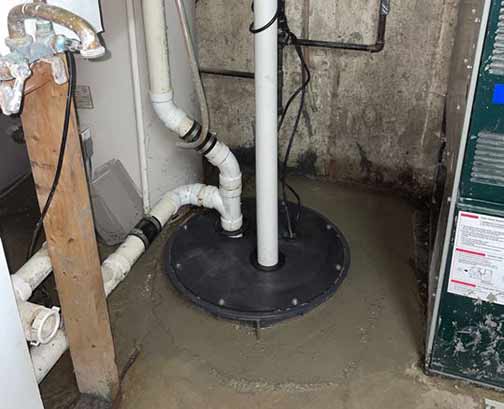
If your home has an ejector pump, this device is easily the most critical equipment in your plumbing system. This is because problems in the ejector pump not only affect the function of your plumbing but can pose a major health hazard to your home, explains RentEasy Management.
Ejector pumps are only needed in homes where some plumbing fixtures are located below the level of the municipal sewer lines in the street. As a result of this difference in heights, the home’s drainage cannot operate in the same way as the drainage systems in other homes.
Ejector pumps lift wastewater from plumbing fixtures located at the lower levels of a house and push it up to the street level. From there the water can flow into the central sewer system under gravity. If the ejector pump fails, the home can become unlivable.
Like all artificial solutions, ejector pumps have their problems. However, as long as these issues are found early and fixed promptly, they don’t pose a serious challenge to the home. The main problem is when a home’s ejector pump fails suddenly without the homeowner’s knowledge.
If this happens, instead of being pumped out of the building, wastewater will collect inside the pump basin until it floods the home or some plumbing fixtures start to back up. The impact of this can be highly damaging on an emotional, sanitary and financial level.
The ability to tell when your ejector pump is ready to pack up can protect you from dangerous emergencies. Is there a way to predict ejector pump failures before they happen? If the following problems are in your home, it is time to replace your ejector pump.
7 signs it is time to replace your ejector pump
The pump is old
The minimum service life of an average ejector pump is ten years and over. An ejector pump may last longer or shorter than its expected lifetime depending on how much work it does and the quality of service it gets. If your ejector pump is nearing the end of its projected lifespan, it may be time to replace it.
Unusual noises from the pump
If you hear the sound of metal rubbing against metal, every time the pump is working, it is time to replace it. Grinding, rattling, clanging or squealing noises from an ejector pump are all signs of internal damage. This problem will only get worse and the pump can fail at the most unexpected time.
The pump rattles badly
An ejector pump that wobbles and rattles while working is on the edge of failing. Your ejector pump will act this way if broken pieces are inside it or some components are bent out of shape and badly damaged. Delaying to replace an ejector pump that is shaking badly only gives it time to damage other system parts.
The flow rate is severely reduced
The flow rate is the amount of wastewater an ejector pump moves per minute. The flow rate is set by the equipment manufacturer, based on the pump’s capacity. If the flow rate of your ejector pump is falling (taking longer to pump the same volume of water), it is probably because the impeller is severely eroded. This is a sign that you should replace the pump.
Unpleasant odors inside your home
If the pump works properly, there will be no odors inside your home. The presence of bad odors in the house signifies that the ejector pump is not removing wastewater quickly enough or pumping at all. The pump should be replaced, especially if you have had this problem.
Higher energy consumption
Sudden spikes in the power bill that cannot be accounted for may be from your ejector pump. Aging ejector pumps with mechanical problems are not only less efficient, but they will use up more energy than normal. If the pump has any of the issues above, it will use more energy while doing less work.
Visible signs of rust
Ejector pumps have metal parts on their inside and outside. These parts are constantly exposed to water and can start to rust. Corrosion may also happen as the pump reacts with the chemicals inside wastewater. If your ejector pump has visible signs of rust on its body, you should replace it before it fails.
As you replace your ejector pump, you may want to think about doing an upgrade. Instead of a like-for-like replacement, it is a good idea to update to a new system that overcomes the limitations of your old pump. An experienced plumber can work with you to ensure that you buy an ejector pump that fully meets the needs of your home.


